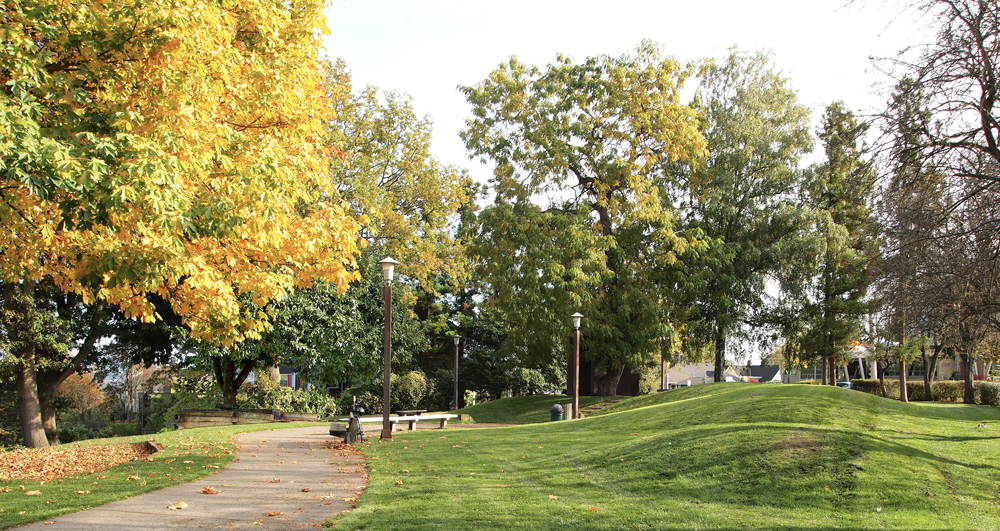Image from Wikipedia
Despite writing little about it I am a great admirer of landscape and Capitol Hill is a fabulous place to explore landscapes both grand and intimate. One of my favorite Capitol Hill landscapes, and the first of what I hope to be many blog posts on parks, take full advantage of our neighborhood’s surname and presents one with a grand view of Lake Washington and beyond. Named after one of Seattle’s very first European settlers, Louisa Boren, Louis Boren Overlook (park) comprises a little over seven acres, most of which are on a slope connected to the much larger and wooded Interlaken Park.
The big draw is the tremendous view it provides one the opportunity to enjoy. The park also has many design elements of a smaller scale which work almost transparently to reinforce the powerful vista. Included among these elements is a running path bisecting the upper portion of the park. The path provides a nice venue from which to engage both the distance views of Lake Washington and the Cascades, as well as some of the neighboring homes.
Copyright 2013 John M. Feit
Copyright 2013 John M. Feit
The path is framed by higher ground to its west (non-view) side; the mound also forms a visual and acoustic barrier to the heavily traveled 15th Avenue as well as a nice sense of enclosure, reinforcing the view to the east. The curb, seen to the far left of the above image, provides the subtlest of definers, gently offering a modest edge just before the land drops about 180 feet into Interlaken Park.
Copyright 2013 John M. Feit
A regular to the park, I can attest that a favorite prospect is defined by a solitary tree, surrounded by a bench and railroad ties. Just right for two people to enjoy; with many a couple being seen there at any given time.
Copyright 2013 John M. Feit
To the southwest of the lover’s bench, there is a 1975 sculpture in raw steel by Oregon artist Lee Kelly, sited on the highest grade in the park.
Copyright 2013 John M. Feit
Copyright 2013 John M. Feit
Copyright 2013 John M. Feit
The park’s real treat is, of course, its view. In any season, and with a clear sky, the democracy of our Seattle park system reveals itself giving to us all views that are typically reserved to a select few. The view is particularly captivating if you are fortunate enough to catch it on a clear winter’s day, when sunlight bathes the freshly fallen snow in the Cascades, distinguishing their noble profiles and as it did on a clear and cold morning January 2nd, 2013.








